Mastervolt MLi 12/1250 premium system integraged LiFePO4 battery
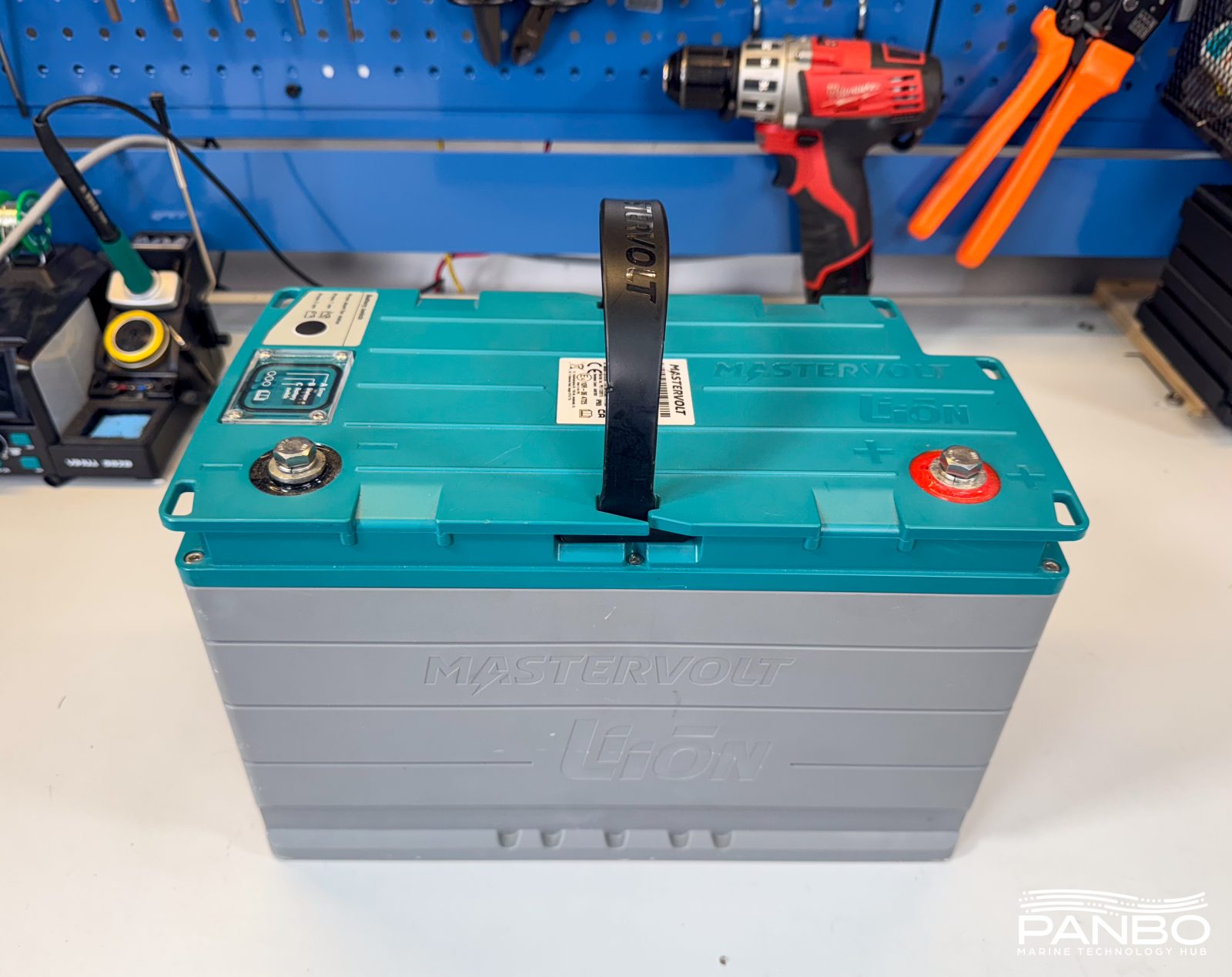
Mastervolt’s MLi batteries are some of the most capable, premium batteries in the marine marketplace today. With features like native MasterBus, CZone, and NMEA 2000 support they underpin some of the most complex marine installations you can find. These batteries are built on a foundation of quality, engineering, and reliability. The 12-volt, 1250 watt hour battery is the smallest entry into the line but gives up nothing to its larger brothers and sisters. The obvious question is, how do I benefit from this battery and how is it different from others in the marketplace? Let’s take a look at the battery and what it can do.
First, let’s dispense with the elephant in the room before it sits on the furniture. Mastervolt’s MLi batteries are not cheap. These are high quality, system integrated batteries with a slew of premium features. The cheapest price I could find online is just over $1,300 from Fisheries Supplies. Stacked up against some of the value leaders, the pricing might be a little hard to understand. But, when you look at the types of systems built around these batteries and the differences in their build quality, integration capabilities, and supportability, things begin to make more sense. If you’re looking for the cheapest way to build a giant battery bank, look elsewhere. If you’re building an advanced system, integrated with charge sources, converters, inverters and more, you are in the right neighborhood.
Features
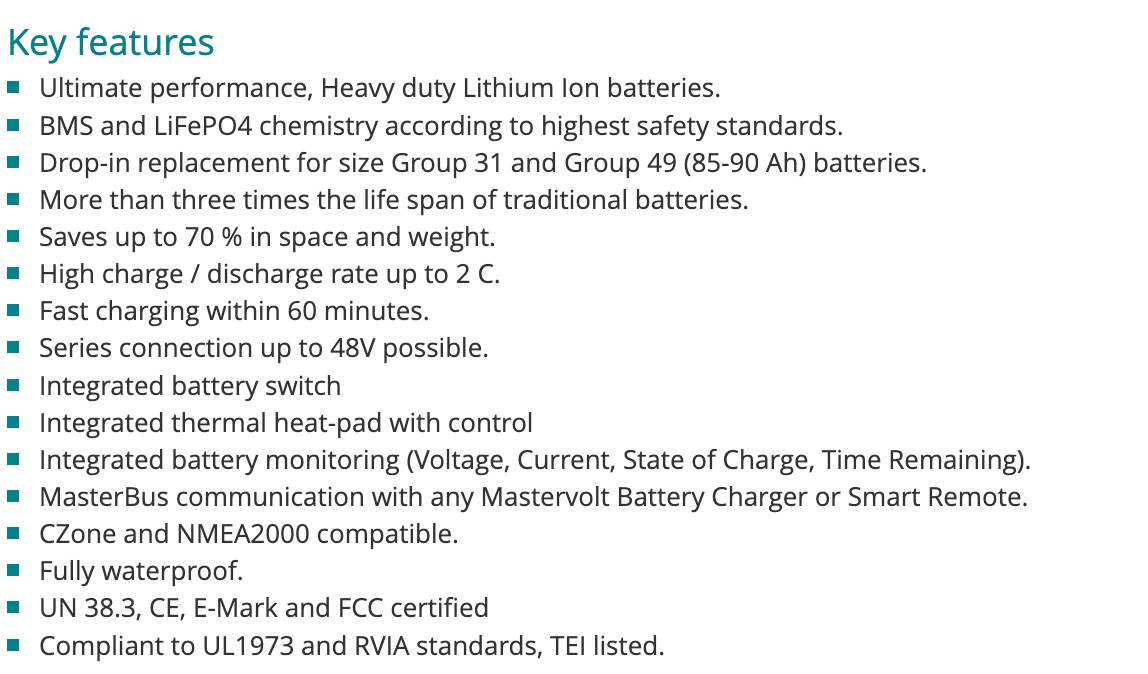
As I mentioned, the MLi 12/1250, like all the MLi batteries offers MasterBus, CZone, and NMEA 2000 communications, an easily accessed power switch, automatic heating, and impressively high charge and discharge limits. Mastervolt uses passive balancing with a learning algorithm that tracks cell behavior in order to predictively balance cells. This allows the BMS to more aggressively balance known laggard or runner cells. The battery roughly matches BCI’s group 31 sizes and offers flanges on the long sides for mounting brackets. The batteries support mounting either on upright or with either long edge down.
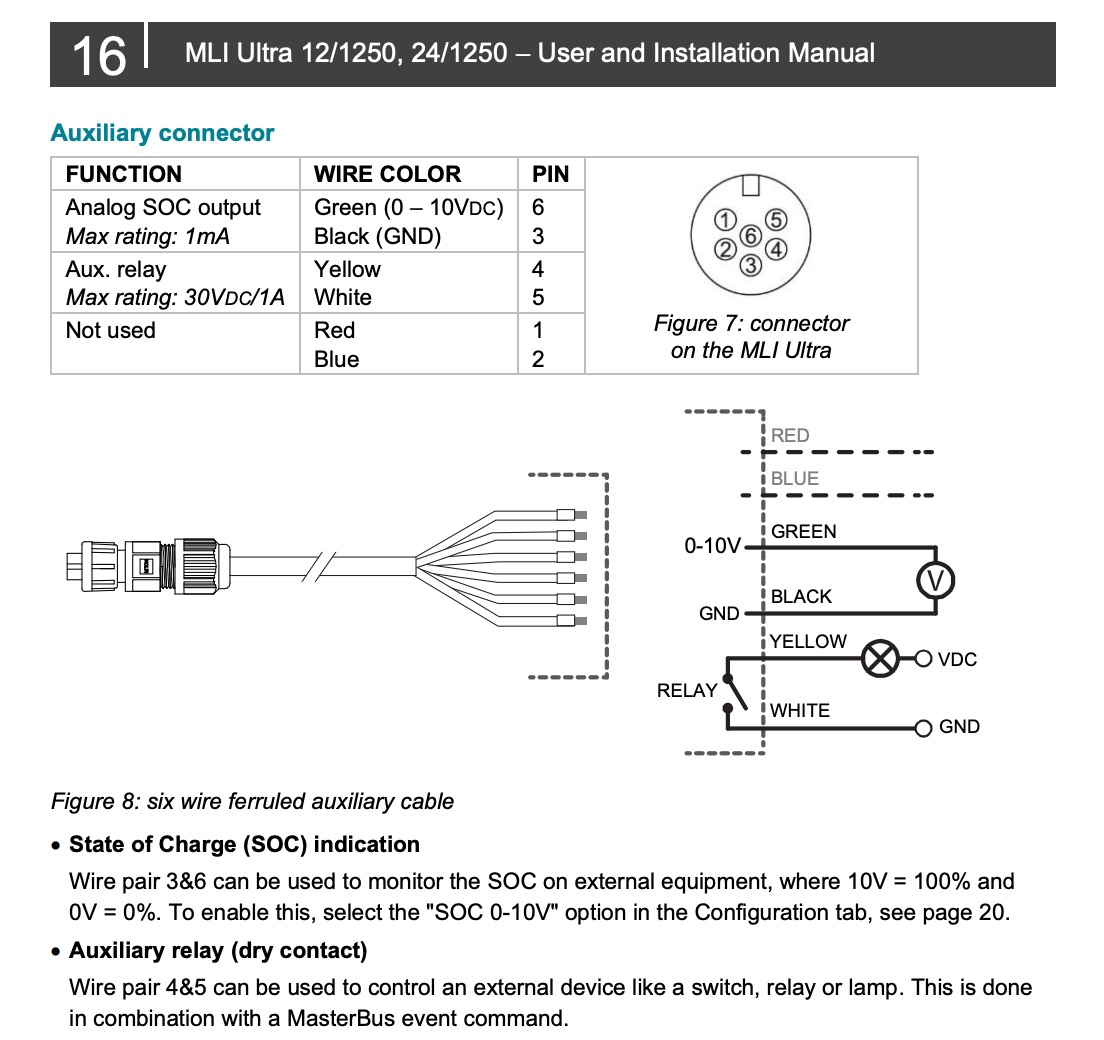
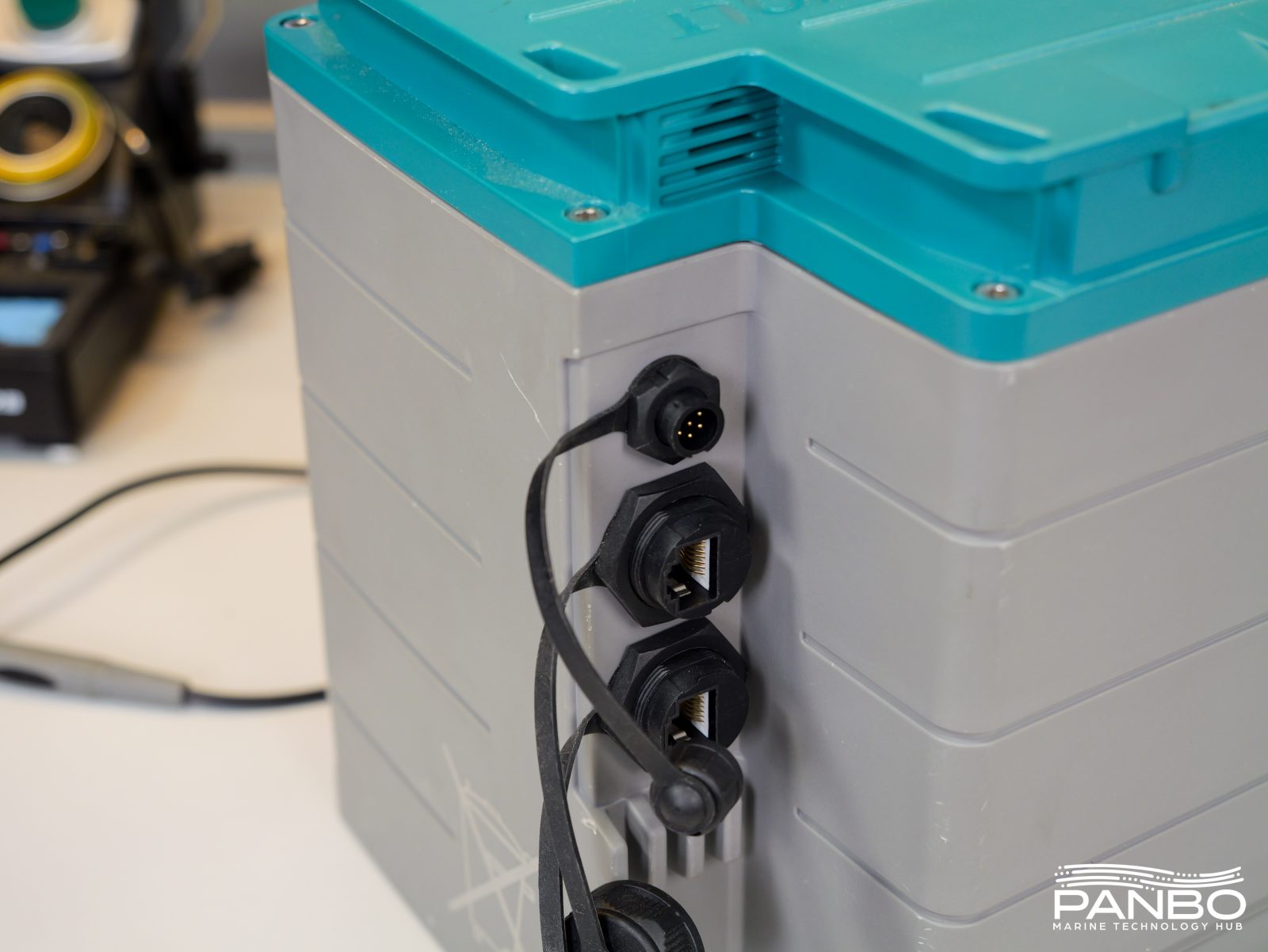
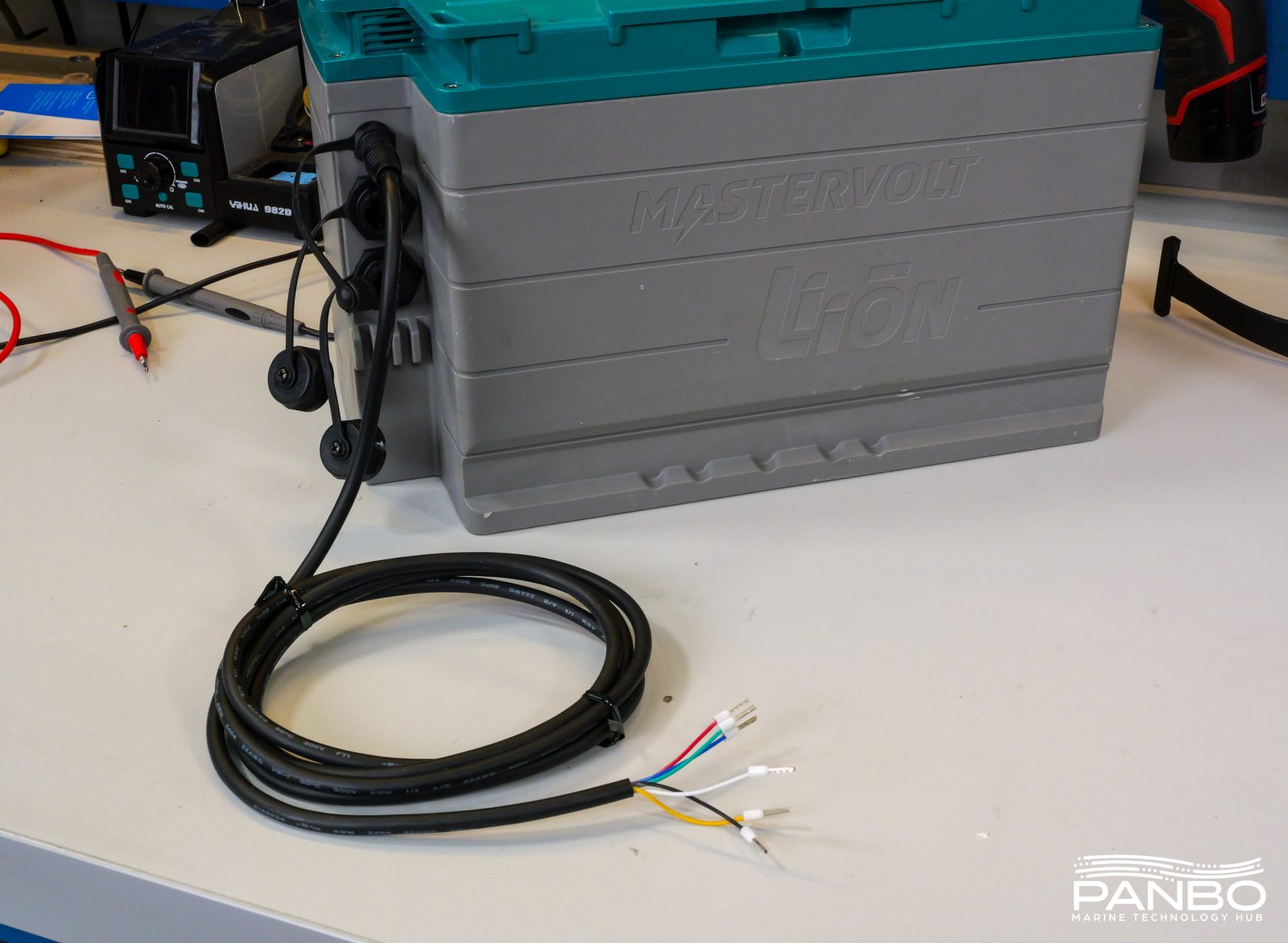
The MLi 12/1250 includes an auxillary connector with two highly useful functions. The six pin cable utilizes two pair of wires, one for an analog state-of-charge output and the other for an auxillary relay.
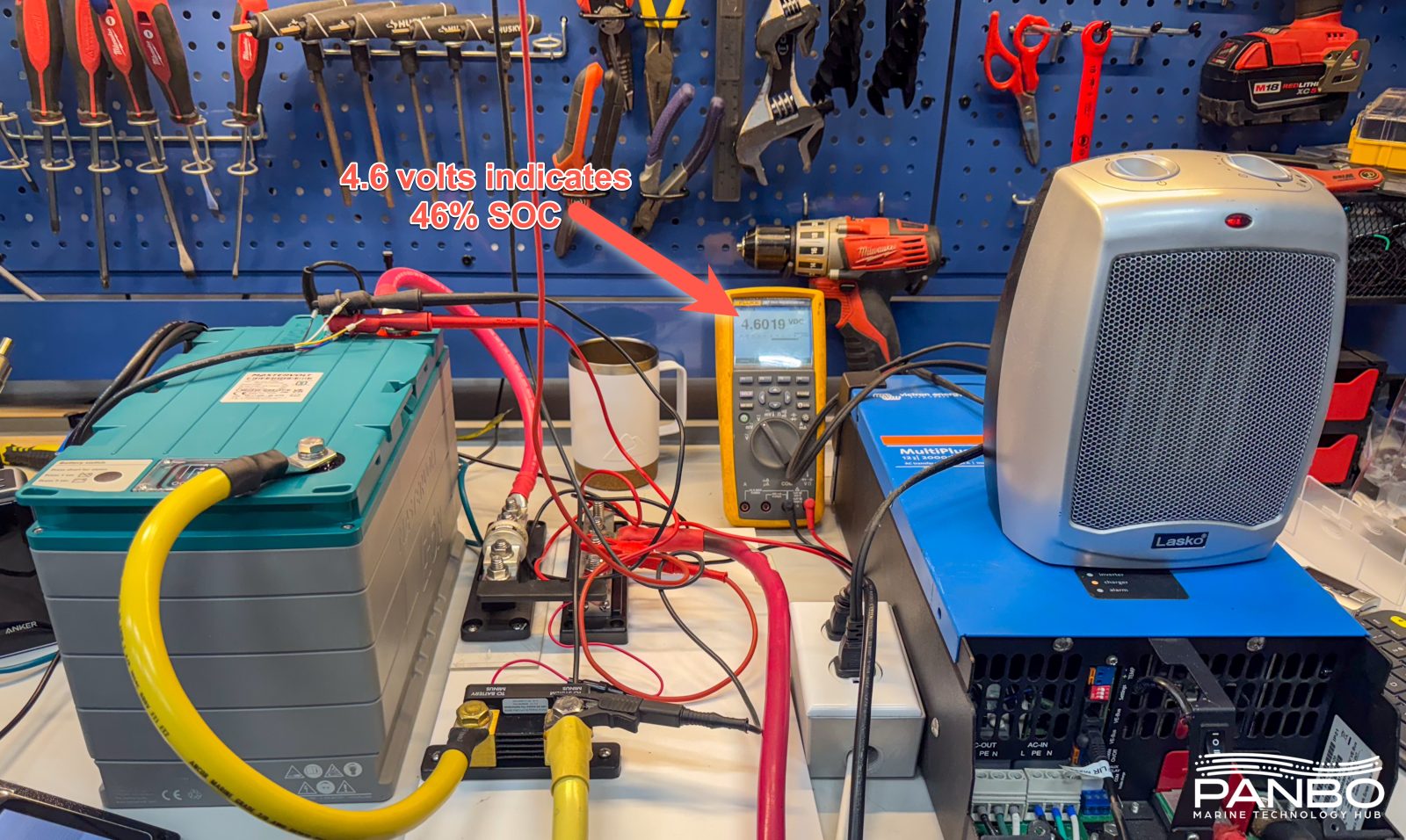
The analog SOC output ranges from 0 to 10 volts based on the battery’s SOC. So, at 0% SOC, it outputs 0 volts, at 50% SOC, it outputs 5 volts and 10 volts fully charged. That output could feed a panel mounted gauge or trigger an event when SOC dips below a desired level. I love the flexibility it affords.
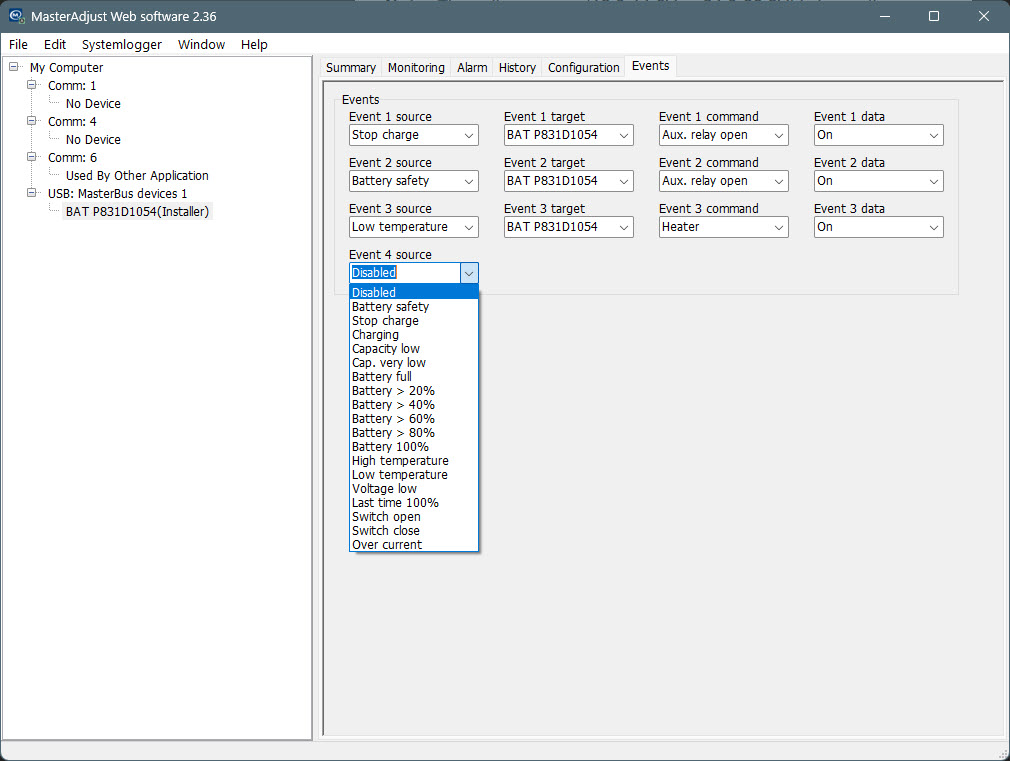
Speaking of flexibility, the auxiliary relay also affords a huge number of options. The Mastervolt’s MasterAdjust software confiugres the auxilliary relay’s behavior. Note that MasterAdjust needs a MasterBus to USB interface to faciliatate communications between a PC and the battery. With the software installed and the USB interface connected, you can control quite a few aspects of the battery’s functionality including the state the of main contactor (described as the Switch in the drop down above) and the auxiliary relay. For example, the relay could signal an alternator relay to stop charging in the event of any anomalies.

Mastervolt is pretty quiet about whether the batteries can be used for engine starting. But, it is worth noting they support up to 500 amps (or 5C!) per battery for up to ten seconds. The battery handles 200 amps or 2c continuously under discharge and 100 amps during charging.
Physical build
Let’s start with a video of the teardown process. I am always pleased to open a battery case secured with screws instead of glued together. I realize it adds a little cost, but it also facilitates a repair without destroying the case.
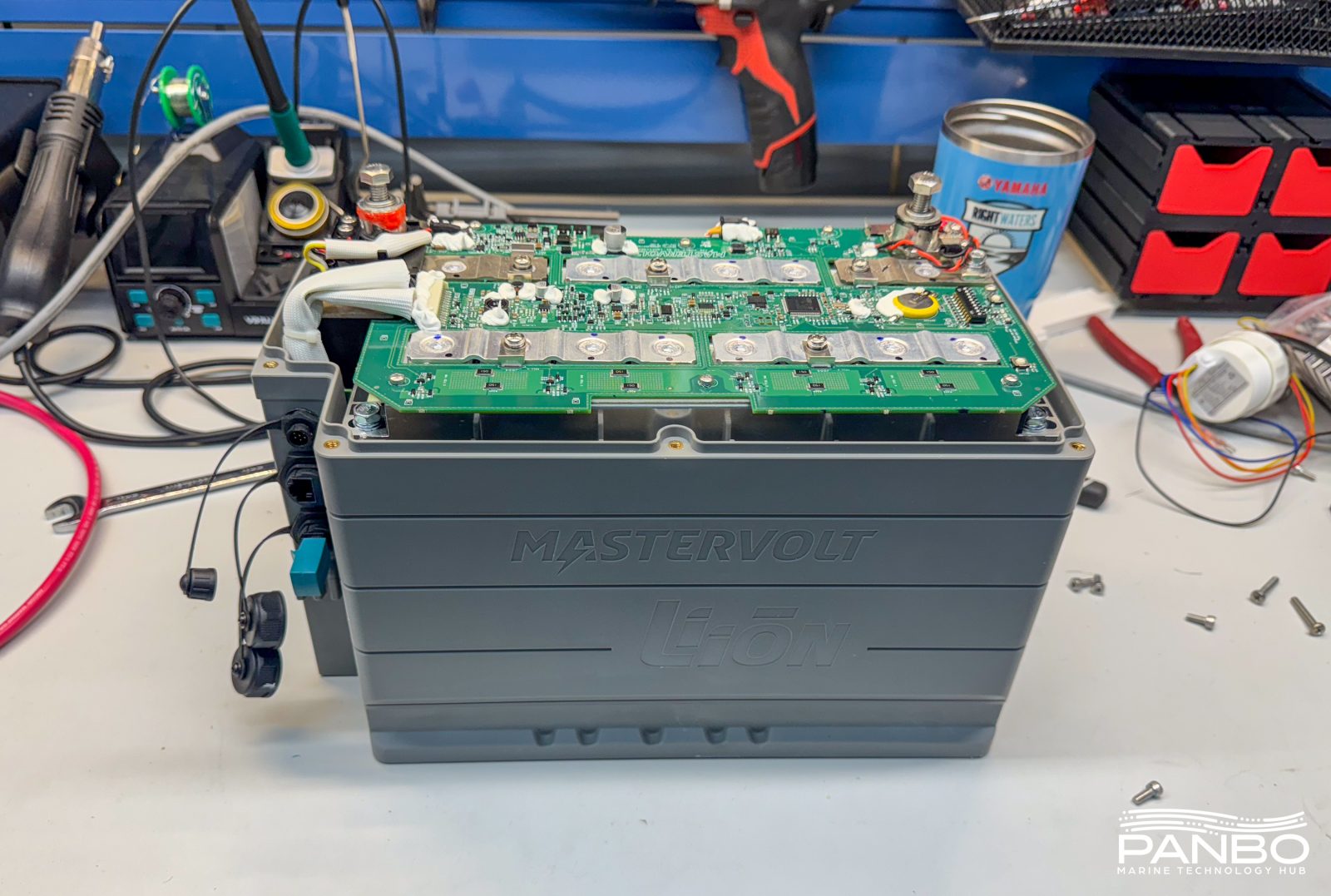
As the video above shows, opening the MLi 12/1250 reveals a very well made battery. MLi series batteries utilize a contactor rather than MOSFETs to disconnect the battery in the event of a problem or a user defined event. The suprisingly compact contactor sits tucked down on the left side of the cell pack in the picture above. The BMS neatly wraps around the laser welded bus bars that connect the 8 EVE 50 amp hour cells arranged in a 4 series, 2 parallel connection scheme.
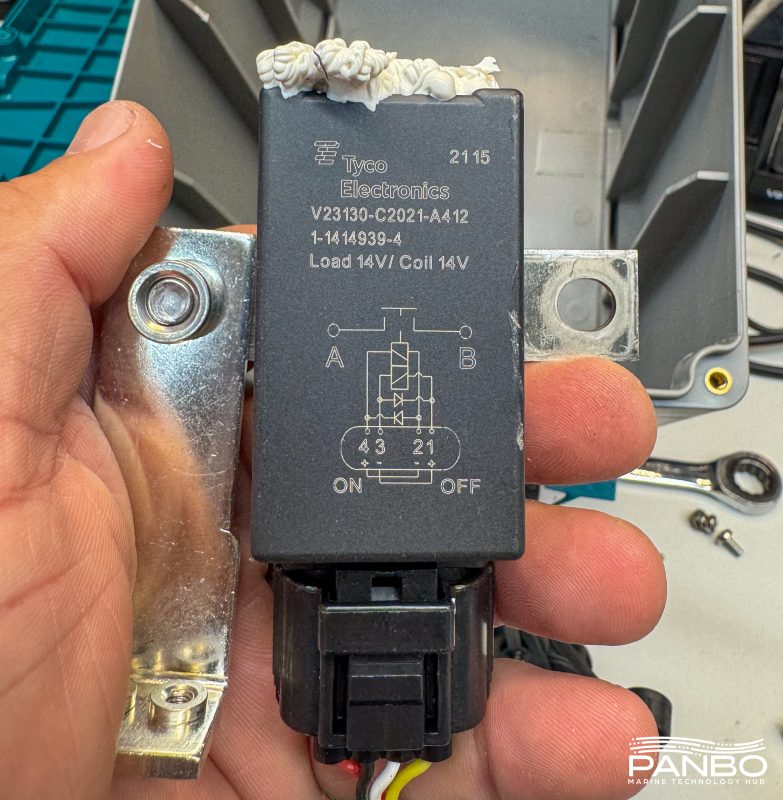
The contactor or relay is the gatekeeper for the battery. The contactor allows or interrupts energy flow through the positive side of the battery pack. If there is an issue of any sort, the BMS commands the contactor to open and all energy flow ceases.
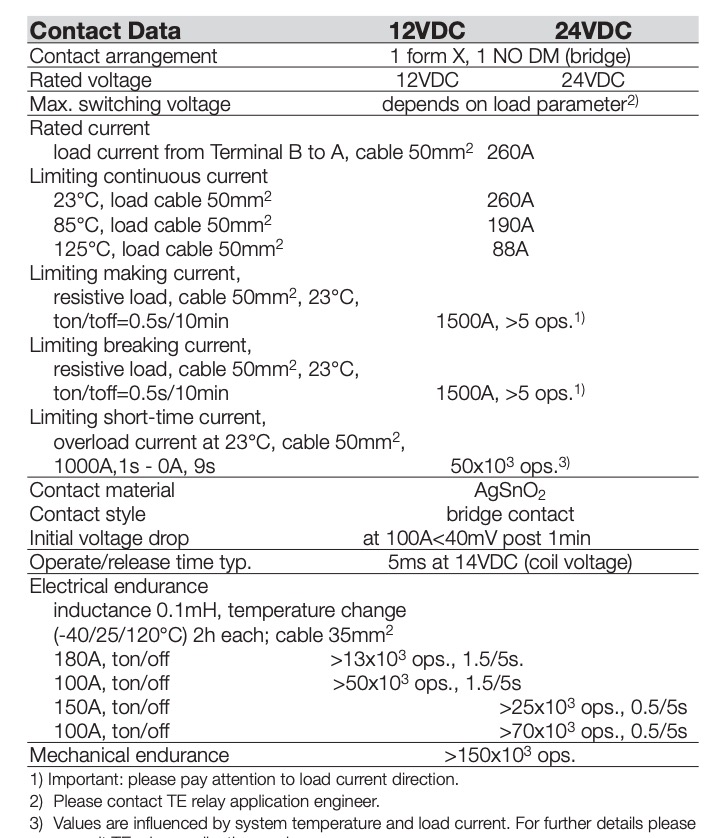
According to its datasheet, the contactor handles 260 amps of continuous current, well in excess of the 200 amp continuous current rating of the battery and likely to be an order of magnitude more than typical load on the battery. The contactor is bistable, meaning it doesn’t require power to maintain either its connected or disconnected state. Combined with a mechanical endurance rating for 150,000 operations, a contactor failure is highly unlikely.

Mastervolt supports unlimited batteries in parallel and up to 4 in series for a 48-volt nominal bank. The unlimited parallel configuration support shows their confidence in the robustness of these batteries. Additionally, I believe the contactor is part of what allows large banks as there is less concern about damaging FETS with large current flows between batteries.
MasterBus and MasterAdjust
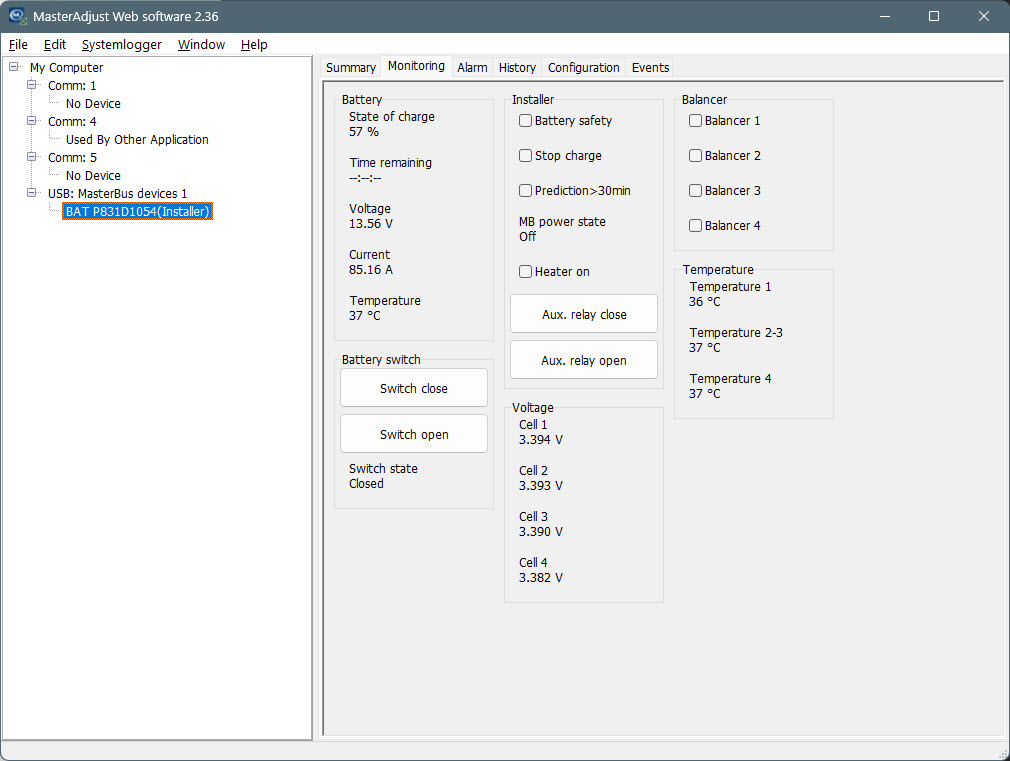
Mastervolt, like Victron, delivers additional value from their batteries by integrating them with the rest of their power systems. Mastervolt’s MasterBus CANBus based communications systems allows batteries, inverters, battery chargers, alternator regulators, shunts, displays, and many other components all communicate via MasterBus. Those communications allow coordinated charging, controlled response to safety events, and the sharing of data between connected components.
MasterBus components, including MLi batteries, are configured using Mastervolt’s MasterAdjust software and the previously mentioned MasterBus to USB interface. MasterAdjust offers detailed monitoring of the battery’s status, alarms, and history. Additionally, the battery’s configuration can be updated, primary contactor and auxiliary relay controlled, and events managed.
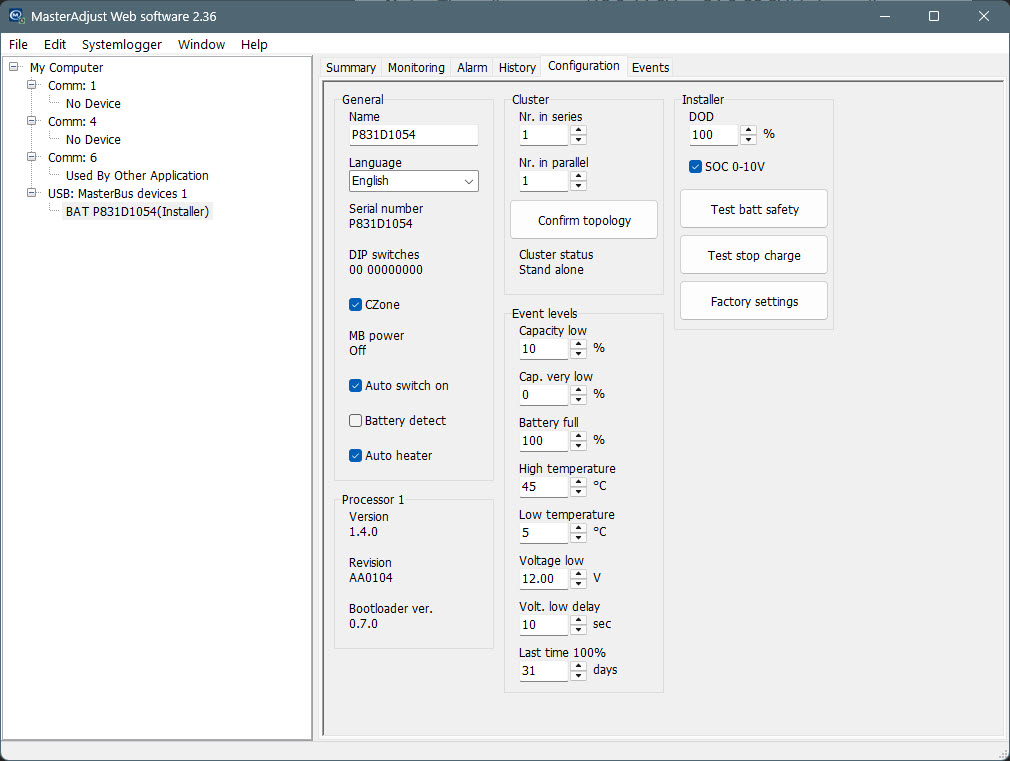
Configuration options include naming the battery on the MasterBus network, defining cluster topology for parallel and series operation, and defining numerous operational parameters. Mastervolt handles depth of discharge (defined in the top right of the config screen above as DOD) a little differently than most batteries I’ve encountered. If DOD is set to 50 percent, the battery will only be allowed to use 50 percent of its capacity or 50 amp hours. The departure from other batteries comes in how the state of charge is reported by the battery. In my 50 percent DOD example, the battery will report 5 amp hours of current consumption as 10 percent of the battery’s capacity. So, when 50 amp hours have been consumed, the battery will report zero percent SOC.

MasterAdjust provides a cycle count, the number of days it’s been since the battery was charged to 100 percent, the most amp hours used in a cycle, highest and lowest voltages, and timers of how long the battery has spent at low states of charge. Interestingly, the SOC below 20 and 30 percent thresholds arrived at roughly those levels. Since I don’t know anything about the battery’s journey before it made it to me, I can only assume they’re accurate.
NMEA 2000 communications
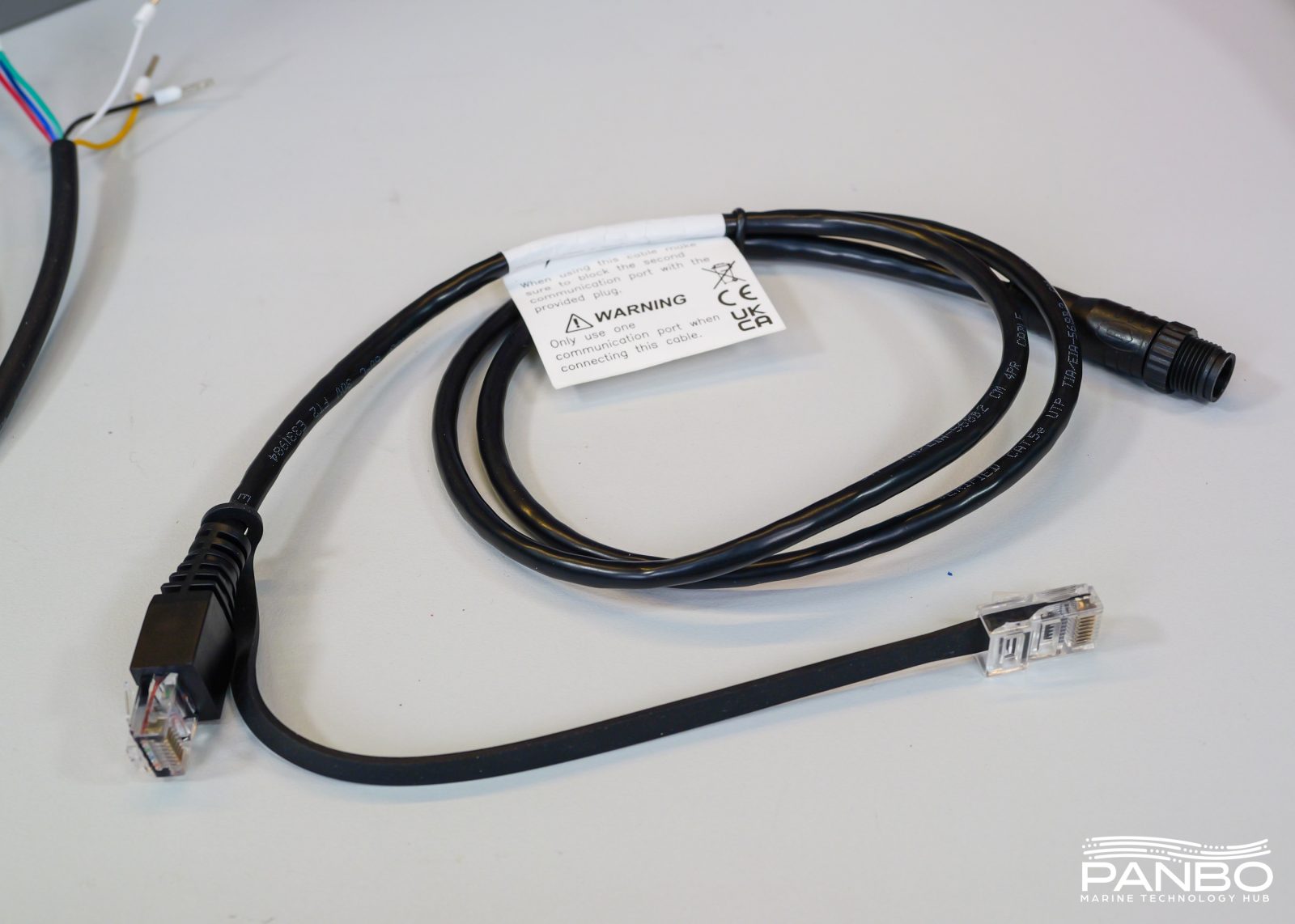
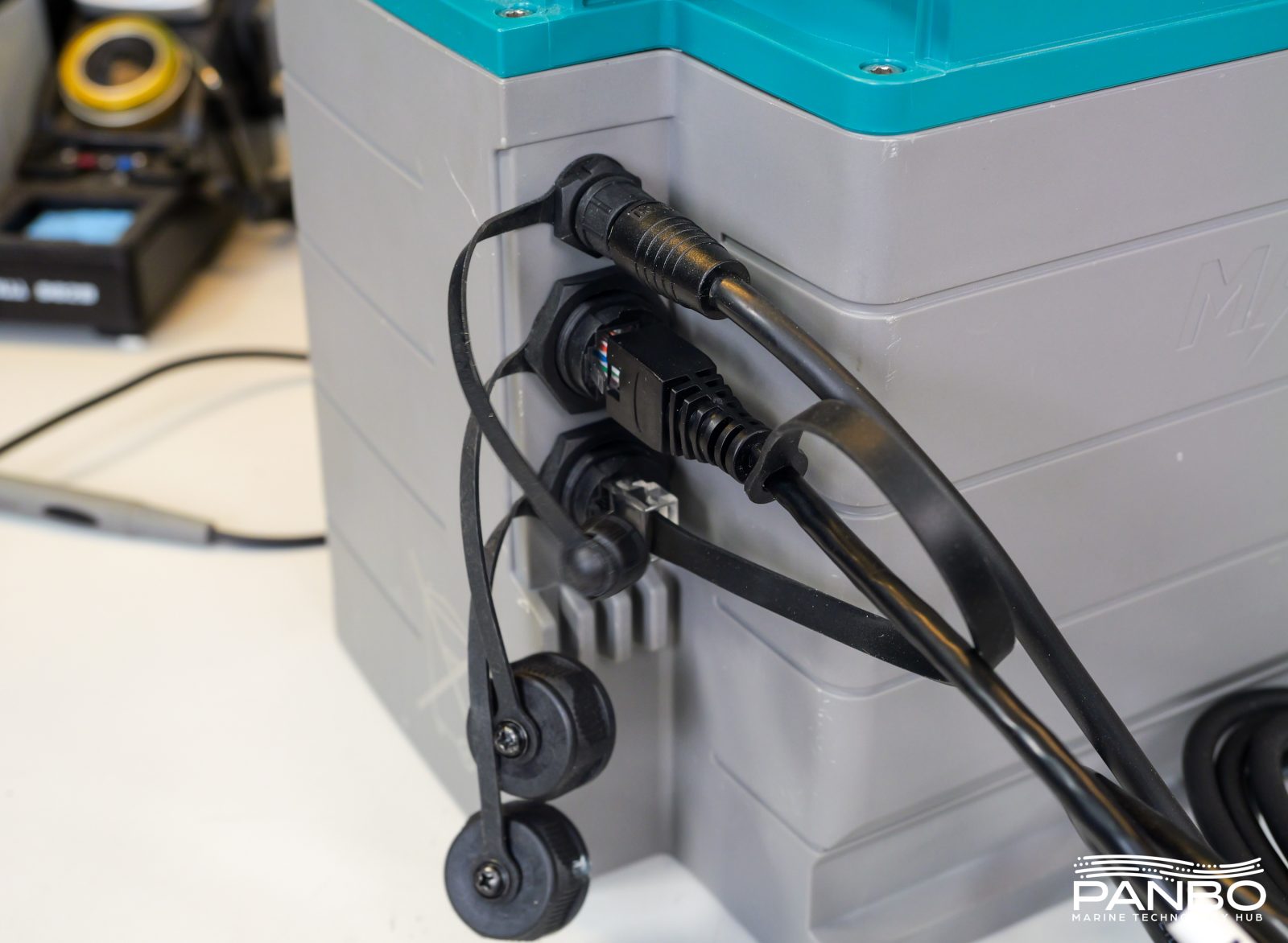
MLi batteries either communicate via MasterBus or CZone modes. CZone mode includes NMEA 2000 support. The battery connects to a NMEA 2000 cable using the supplied RJ45 to M125-pin cable. The cable comes with a dummy RJ45 on it to plug into the second RJ45 port.
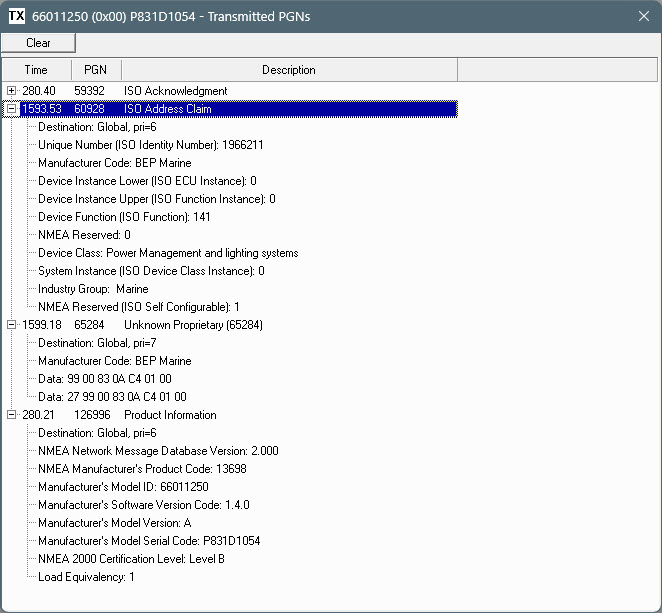
The battery doesn’t output any of the standard NMEA 2000 DC PGNs without configuration using the CZone configuration software. Unfortunately, I don’t have a CZone to PC interface, so I wasn’t able to configure that output.
Performance
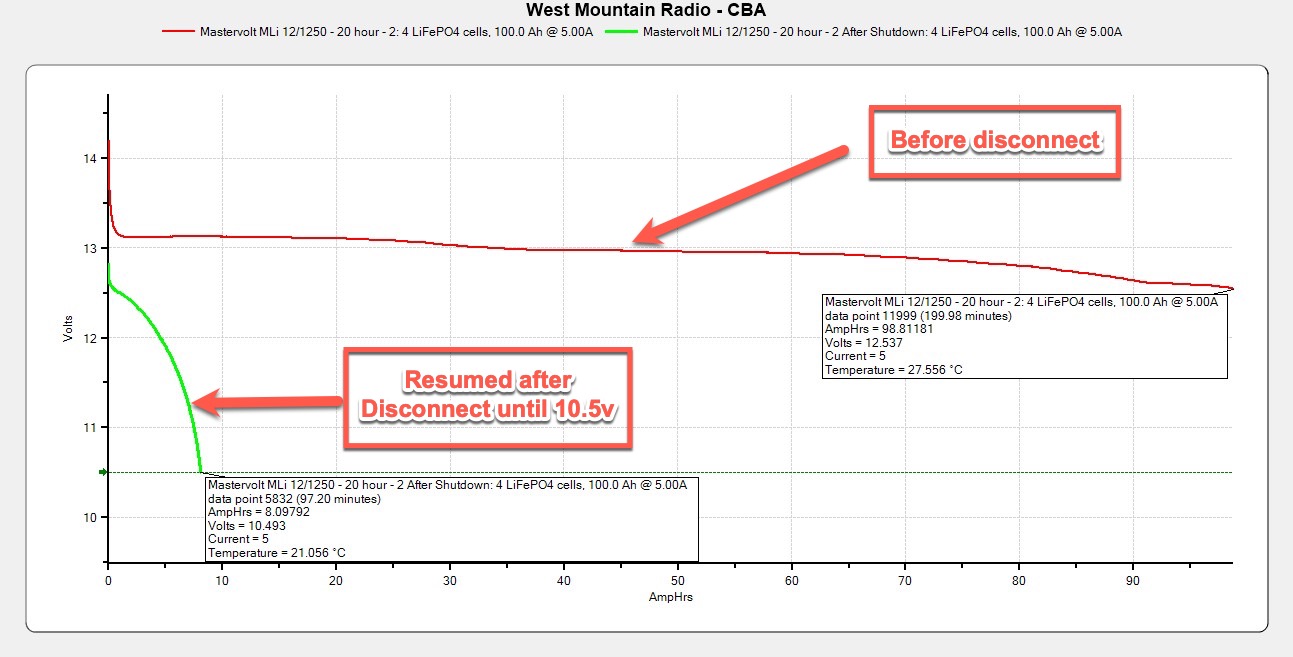
Batteries that employ a properly rated contactor tend to yield pretty boring performance results, and that’s a good thing. The MLi 12/1250 is no exception to this notion. The battery accepts charge and provides power until either the state of charge reaches the configured limit or the current exceeds the battery’s impressively high limits. One quirk of the battery is that the BMS is quite aggressive about protecting the battery from over discharge. In fact, it’s so aggressive I never was able to run a discharge capacity test without the BMS interceding.
As you can see in the graph above, the first run (red line) ended with the battery above 12.5 volts. That’s because the BMS stepped in and shut down the test when it calculated that 100 percent of the battery’s rated capacity had been used. I then overrode the BMS and turned the contactor back on. That second test, represented by the green line, yielded another 8.1 amp hours of capacity. In total, the battery delivered 106.9 amp hours across the two tests.
As one would expect with a contactor, the battery holds up well under heavy loads and charging. The battery’s rated for 200 amps of continuous discharge and 100 amps of continuous charging current. Those are impressively high values. At two times the battery’s capacity, the continuous discharge rating allows depleting the entire battery’s capacity in just 30 minutes. In my testing, I pushed the battery pretty hard and saw no issues until I pushed well past 100 amps of continuous current.
The video above depicts the issue I saw with high loads on the battery. Once the load eclipsed 150 amps, the battery began to cycle its contactor off and on. I suspect, but don’t know, that this might be a thermal issue of some sort. It seems like the battery tolerates a very high load for several minutes before reaching a threshold in which it cycles off and on repeatedly. I don’t think this issue is a big deal in most installations. The behavior doesn’t surface until the battery is discharged for a sustained period well over 1C. In my test above, it took over 8 minutes for the behavior to materialize. In that time, the battery had already provided over a quarter of its total charge. However, Mastervolt does rate the battery for 200 amps or 2C continuous load and I wasn’t able to reproduce that load handling.
Final thoughts
This is a premium battery with premium features and a price to match. It is one of a very small group of contactor based self contained batteries. The contactor enables some pretty huge load handling capabilities and should deliver a highly reliable battery. Matched with its MasterBus, CZone, NMEA 2000, analog voltage, and auxiliary relay communications capabilities, this battery has serious integration capabilities in a myriad of applications. If you are after the most energy storage for the least amount of money, there are clearly better choices. But, Mastervolt’s integration capabilities and reliable foundation make this battery a good fit for more demanding installations.


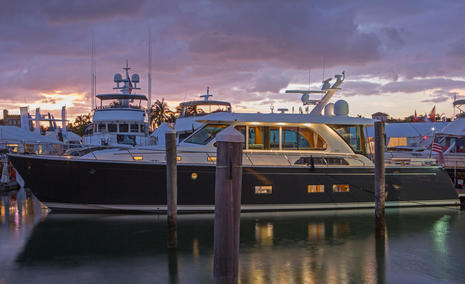
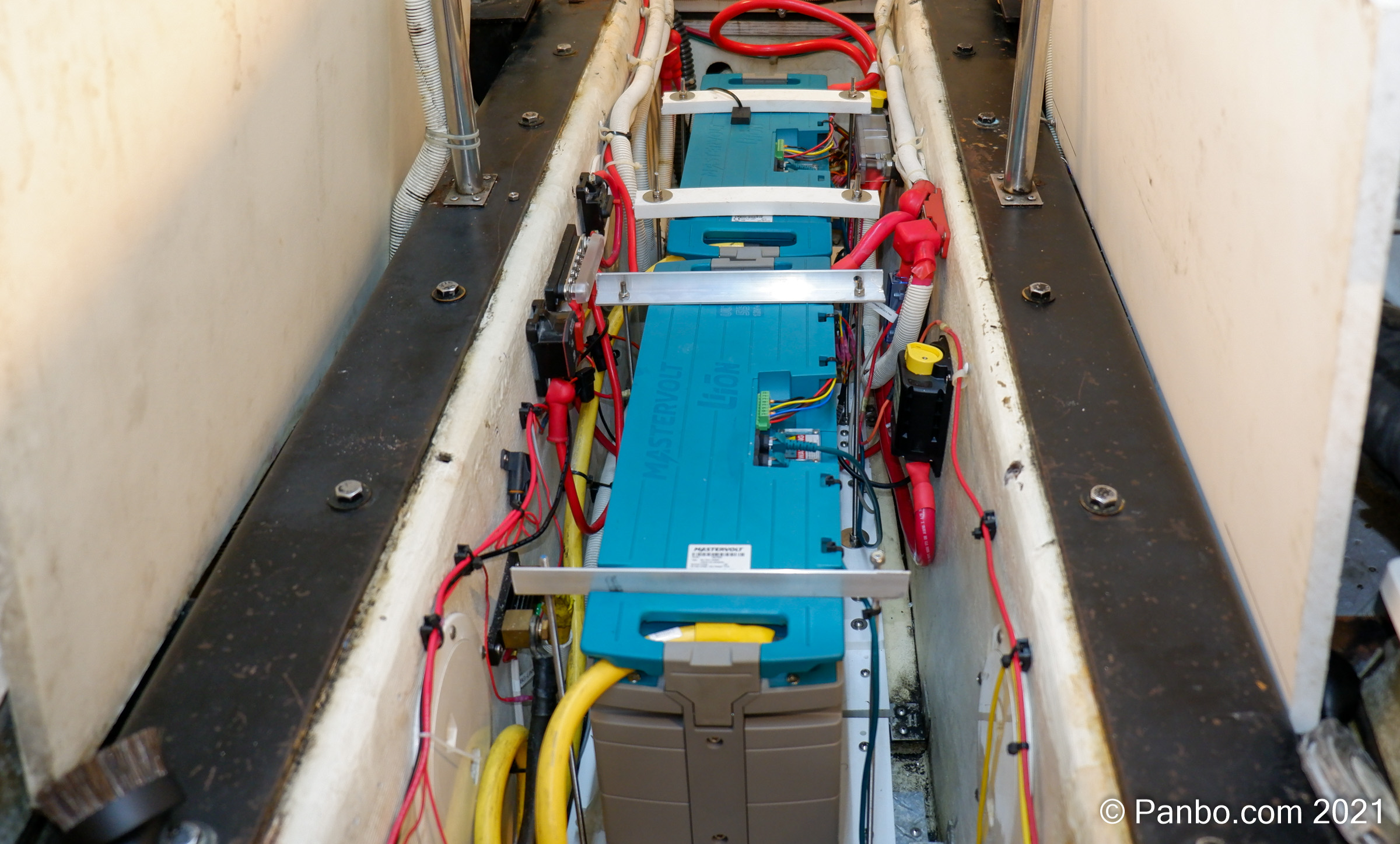
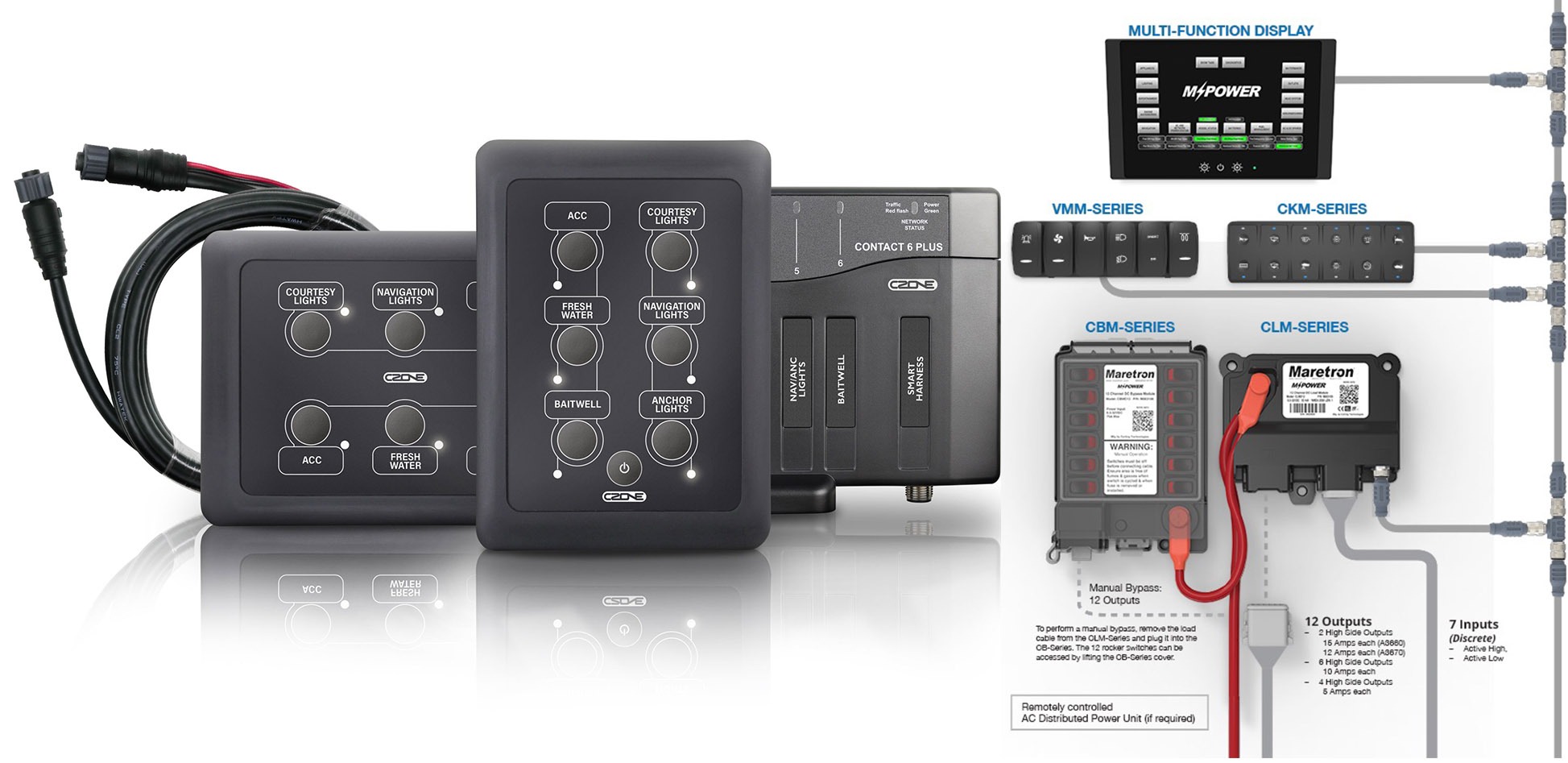
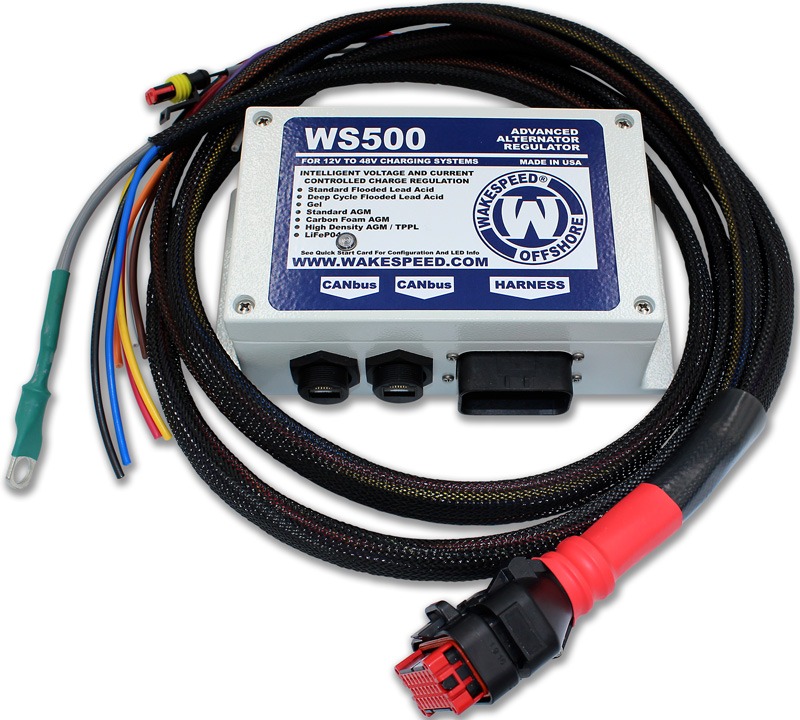







I personally feel this battery should be disqualified from serious consideration. Failing the discharge test under your normal operating mode test conditions (think inverter application) is a big red flag. What other specs have been fudged? Unacceptable for a super premium battery. It certainly goes to show that paying more does necessarily give you more.
Lewis,
I don’t disagree that failing to meet rated specs is an issue. But, I’m perhaps more willing to cut Mastervolt some slack than you are because this particular spec is so very high. The battery will work just fine at 1c indefinitely. It works at almost 2c for 8 minutes. I think Mastervolt simply overshot with their rating and it was a rating that doesn’t really gain you that much. 2c means depleting the battery in just half an hour. Frankly, I think designing a system on a boat with that type of workload is questionable design.
So, all I can do is raise the issue. How potential buyers see that issue and how it influences their purchasing decisions is up to them.
-Ben S.
my boat is fully equipped with Mastervolt, the battery works fine. I did only one big error when migrating to Lithium. The 70 amps has very noisy fans and they run continuously. My advice to change the battery from the shore, install 2 Lithium 220V chargers in parallel, by doing so, you could select é20V Lithium chargers without noisy fan
I think Mastervolt is quiet about using their Lithium batteries for starting is that there is a big change you burn the starter. 12V starter motors are actually rated for 9V. This is because of the current they pull and the internal resistance of a lead acid battery causes the voltage to drop to about 9V. Lithium batteries have low internal resistance, so the voltage doesn’t drop that much. So now your 9V starter gets 12V to work with. This is also why those small USB rechargeable emergency starter packs work so well.